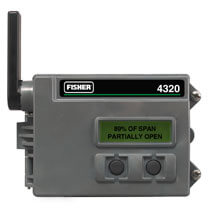Sometimes a good discussion occurs among experts in a collaboration application within the Emerson firewall. Today’s post is an example.
Emerson’s Jonas Berge was asking the global community of consultants and interested parties in refining about the manually operated valves in tank farms. He was seeking information on which ones operators would like to see valve position feedback where they may not have it today.
Michael Calaway responded:
Based on my experience one of the biggest problems in tank farms are the line-ups. There are valves that must be opened and closed to get product into different tanks. The worst is when a finished product goes into the wrong tank and must be reprocessed. Many refineries try to make these valves automatic but there are still a number of sites that are still fully manual which opens up the problem of operator error. So, when you ask which valves we want position feedback on I would say any valve that is critical in a tank line up.
Tim Olsen added:
Many tanks are in use and rotated depending on what feed or product the tank is designated for. Thus, the piping line-up is what gets changed on a frequent basis depending on what feed tank(s) or product tank are used for the current operation. Some refiners also use intermediate product storage. Having a valve position feedback helps ensure the right piping line-up. Think about 3am with heavy rain outside and the field operator is lining up the piping for a certain product tank—having confirmation that all valves are open or closed would help avoid cross contamination such as adding gasoline to a diesel tank.
Patrick Truesdale noted:
One of the biggest challenges is managing tanks which have different grades of product. For example, a tank can be used for premium and regular gasoline (obviously at different times). Therefore two manual inlet valves may be present—one for premium and one for regular. Manually operated valves (MOVs) may not be justified. Assume now that the tank contains premium gasoline and the regular inlet valve is in wrong position. What happens if a quantity of regular gasoline gets into the tank… offspec product—which means a big financial loss. Wouldn’t it be great to know that the manual valve was in the wrong position?
MC Chow highlighted on issue with these manual valves
…the sheer proliferation of different styles and vintage types of manual valves, which tend to be purchased on a lowest price basis at any, given time over the years with little standardization. This requires additional planning for wireless solutions such as the Fisher 4320 wireless position monitor.
Chris Amstutz shared:
Another good starting point is an assessment of the key piping lineups used during product transfers and whether any of the valves are in high hazard areas or have accessibility issues. These locations are where position sensors would have the greatest value by keeping operators out of harm’s way. One good example might in the sump of a manifold where vapors can collect.
If you’ll be joining us in Denver next week for the October 12-16 Emerson Exchange conference, you can catch some of these experts in action including Jonas Berge, Michael Calaway, Tim Olsen, Patrick Truesdale and MC Chow.
If you can join us, make sure to join and participate with these experts and your peers in the Emerson Exchange 365 community.










